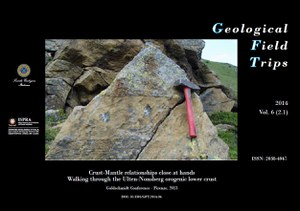Crust-Mantle relationships close at hands. Walking through the Ulten-Nonsberg orogenic lower crust
Goldschmidt Conference - Florence, 2013
This two-day excursion focuses on the Variscan crystalline basement of the Ulten-Nonsberg Zone, Eastern Italian Alps. The Ulten-Nonsberg Zone, also known as the Ulten Zone or unità d’Ultimo in the new geological map of Italy (1:50 000 scale), mainly consists of high-pressure paragneisses and migmatites containing disseminated lenses of mantle peridotites. This lithological association originated in a continent-continent collision zone that reached its metamorphic peak at 340-330 Ma. What makes the Ulten-Nonsberg special is the opportunity to see in the field the transition from spinel- to garnet-spinel-peridotites. This transformation occurred during the influx of C-O-H fluids derived from a submerging crustal slab. The fluids were responsible for the blastesis of abundant amphibole ± phlogopite and trace amounts of dolomite and apatite.
This field trip aims to make a long tradition of field and petrological studies accessible to a wider audience and to showcase our increased knowledge on how a continent-continent collision works and what are the metasomatic processes driven by the crust-to-mantle mass transfer. The first part of this guide provides a summary of the Ulten-Nonsberg Zone geology and of some of the petrogenetic models proposed. The second part describes the garnet-spinel lenses occurring in the Samerberg area (1st day) and the exciting traverse through the Maddalene range, from the Auerbergtal (Ulten valley) to the Lavazzè valley (Non valley), to address the field relation among mantle peridotites, pyroxenites and migmatites (2nd day).
DOI 10.3301/GFT.2014.04

